 Jugoslavenska ratna mornarica – c150 ships 1947-1992
Jugoslavenska ratna mornarica – c150 ships 1947-1992
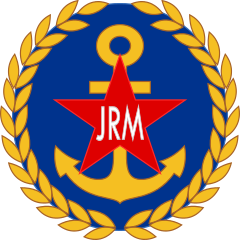 The Yugoslavian Navy (Jugoslavenska Ratna Mornarica, JRM) was the maritime branch of the armed forces of the Socialist Federal Republic of Yugoslavia from 1945 to 1992. It was established immediately after World War II, from the remnants of the Royal Yugoslav Navy and Partisan naval forces. In the early years, the navy was heavily influenced by the Soviet Union, receiving training and equipment from them. Initially, the navy comprised mainly old ships from the Royal Navy and captured Axis vessels, and had hugely ambitious but unrealistic naval plans. It also started to receive Soviet-built ships, including submarines, patrol boats, and minesweepers. Self-Reliance in 1960s started when relationed between Stalin and Tito collapsed and the country started to reduce its dependence on Soviet military aid, developing its own shipbuilding industry, including destroyers, frigates, submarines, missile boats and patrol craft.
The Yugoslavian Navy (Jugoslavenska Ratna Mornarica, JRM) was the maritime branch of the armed forces of the Socialist Federal Republic of Yugoslavia from 1945 to 1992. It was established immediately after World War II, from the remnants of the Royal Yugoslav Navy and Partisan naval forces. In the early years, the navy was heavily influenced by the Soviet Union, receiving training and equipment from them. Initially, the navy comprised mainly old ships from the Royal Navy and captured Axis vessels, and had hugely ambitious but unrealistic naval plans. It also started to receive Soviet-built ships, including submarines, patrol boats, and minesweepers. Self-Reliance in 1960s started when relationed between Stalin and Tito collapsed and the country started to reduce its dependence on Soviet military aid, developing its own shipbuilding industry, including destroyers, frigates, submarines, missile boats and patrol craft.
Prior to the dissolution of Yugoslavia in 1992 the navy counted several Koni-class frigates, Heroj-class submarines, and Osa-class missile boats as its main assets operating frol Split, Pula, Boka Kotorska (Kotor), and Vis. It was capable if needed of operations in the Mediterranean.
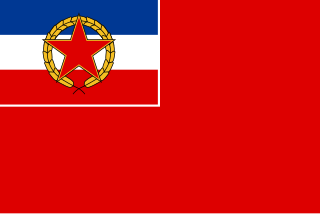 At its peak, the Yugoslav Navy had a well-balanced fleet with significant offensive and defensive capabilities, including anti-ship missiles, torpedoes, and mines. Its role was to defend Yugoslavia’s long Adriatic coastline and protect maritime trade routes. it also conducted joint exercises with other branches of the Yugoslav armed forces and sometimes foreign navies.
At its peak, the Yugoslav Navy had a well-balanced fleet with significant offensive and defensive capabilities, including anti-ship missiles, torpedoes, and mines. Its role was to defend Yugoslavia’s long Adriatic coastline and protect maritime trade routes. it also conducted joint exercises with other branches of the Yugoslav armed forces and sometimes foreign navies.
Breakup of Yugoslavia led to the disintegration of the Yugoslav Navy in 1992 and redistribution of naval assets among successor states. During the Croatian War of Independence (1991-1995), the Navy (operated by Serbs) was involved in blockading Croatian ports and supporting land operations. Postwar these assets were mostly taken over by the newly formed navies of Croatia and the Federal Republic of Yugoslavia, later Serbia-Montenegro.
Foreworld: The Royal Yugoslavian Navy in WW2

The Flower class HMS Mallow became the first sizeable warship of Tito’s new liberation Navy in 1945.
 The small Royal Yugoslavian Navy had a relatively sizeable deterrence power in the Adriatic, facing its most obvious opponent, Fascist Italy. In June 1940 when Italy entered the war against France, the Balkanic country possessed the School Cruiser Dalmacija (a former pre-WW-1 modernized German cruiser, sold), the large destroyer Dubrovnik and the three Beograd, two Osvestnik and two Hrabi class submersibles, the Gunboat Beli Ora and five of the Galeb class, also capable of laying mines, as well as four WWI Torpedo boats, five Malinska class minesweepers, four Vardar class river gunboats, two 1927 torpedo launches and the six 1937 Orjen class torpedo boats (S-Boote type).
The small Royal Yugoslavian Navy had a relatively sizeable deterrence power in the Adriatic, facing its most obvious opponent, Fascist Italy. In June 1940 when Italy entered the war against France, the Balkanic country possessed the School Cruiser Dalmacija (a former pre-WW-1 modernized German cruiser, sold), the large destroyer Dubrovnik and the three Beograd, two Osvestnik and two Hrabi class submersibles, the Gunboat Beli Ora and five of the Galeb class, also capable of laying mines, as well as four WWI Torpedo boats, five Malinska class minesweepers, four Vardar class river gunboats, two 1927 torpedo launches and the six 1937 Orjen class torpedo boats (S-Boote type).
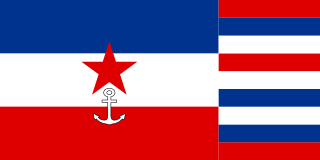 A small force compared to the Regia Marina, but still in better shape than the Air and Land Forces, and a proud force dominated by Croats (officers and sailors). After Italy launched an offensive on Greece on October, 28, soon bogged down in the mountains and cold and even pushed back to Albania, Hitler decided to help its ally and lanched Operation Marita on 6 April 1941. The campaign went on until 1 June 1941 and was seen from North Africa as a diversion. The Wehrmacht launched their central Push from Bulgaria whereas the Italians resumed the offensive against Yugoslavia.
A small force compared to the Regia Marina, but still in better shape than the Air and Land Forces, and a proud force dominated by Croats (officers and sailors). After Italy launched an offensive on Greece on October, 28, soon bogged down in the mountains and cold and even pushed back to Albania, Hitler decided to help its ally and lanched Operation Marita on 6 April 1941. The campaign went on until 1 June 1941 and was seen from North Africa as a diversion. The Wehrmacht launched their central Push from Bulgaria whereas the Italians resumed the offensive against Yugoslavia.
From April 6 to 16, the weak Yugoslav army plagued already by mutinous Croats was destroyed, what remained started an insurrection from the mountainous areas of Serbia until Von Weichs encircled it to capitulation. Meanwnhile, the Yugoslavian fleet was in Kotor/Cattaro, and was captured by Italian forces, as well as its ships, impressed into RM service. Between 1941 and 1943 the Kingdom of Italy annexed the area of Kotor, three provinces of the Governorate of Dalmatia.
The former country’s nations split, the Croats chose in majority to join the axis, and there was even a Croatian “Navy” re-equipped with minesweepers based in Varna, Black Sea, but due to Italian refusal, it only became operational after the Italian armistice, re-equipped with units of the former Royal Navy. But it was plagued by mutinies and a surge of partisans. In 1944, Tito managed to federate many pro-communist Croats against the German occupation.
The start of the Yugoslavian Liberation Navy was quite modest, as Tito managed to gain two old armed fishing vessels, followed by 70 others, fifty patrol boats of various origins, (20 tons at best) and in 1945 as much as 200 transport ships and a dozen other light ships. The Partisans were indeed mainly assisted by Churchill by sea. In mid-1944, 8 PC-type sub chasers and the corvette Nada, former HMS Mallow (“Flower” type) donated by Churchill boosted the fleet.
The early cold war

First reunion of the JRM under Tito to discuss the 1946 naval plan.
The new Yugoslav Navy or Југословенска ратна морнарица (Jugoslavenska ratna mornarica) was founded in 1945. It was essentially a coastal defense force deterring enemy landings along 4,000-kilometer of shoreline and coastal islands of prevent an enemy blockade as well as controlling the Strait of Otranto. Its inheritance was the Partisan’s fleet, highly skilled and operating small boats in raids harassing Italian and later German convoys in the Adriatic. The Navy obtained war reparations or captured many German and Italian submarines, destroyers, minesweepers, and tank-landing craft that formed the bulk of the initial Navy. The United States also provided eight torpedo boats in the late 1940s, albeit obsolete. The position of Tito on the international sphere was not strictly aligned yet with the Soviet orbit and enjoyed a degree of autonomy that makes the west hopeful of a counterweight in the Adriatic and present Soviet encroachment in the region, already secured via Albania. Two ex-Royal Navy W-class destroyers were bought in 1956, and Britain still supported Tito against Moskow’s influence.
1950s Tito’s naval Ambitions
The only organised political force in Yugoslavia after the expulsion of German occupying troops in 1944 was indeed the People’s Liberation Army, commanded by Tito, who formally became Prime Minister in March 1045. The monarchy was swiftly abolished and a Federal People’s Republic was proclaimed. A new constitution modelled on the Soviet one was adopted in 1946 and ‘sovietisation’ of the country begun. Industry was nationalised and plans for economic development were introduced, aimed at rapid industrialisation based on Soviet advice and using Soviet credit.
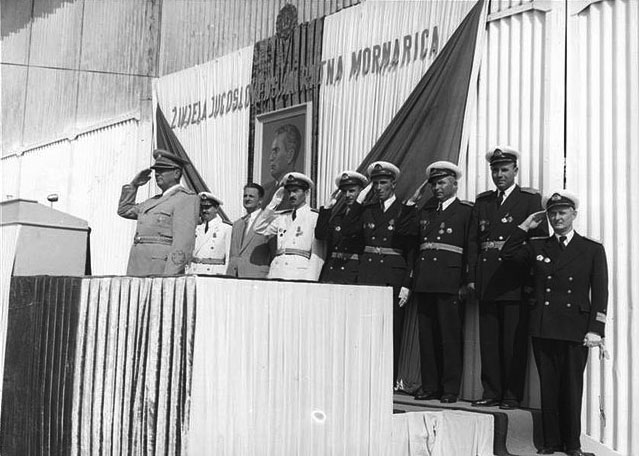
Tito’s speech to the naval staff on 10 September 1951.
Hostile at first to the West because of the Trieste incident and fears of a royalist counter-revolution, Tito remained closely allied to the Soviet Union. His political ambitions were aimed at the creation of a communist Balkan federation. This was partially attained when Albania became a Yugoslav satellite, while discussions with Bulgaria began and support was given to the communist guerrillas in Greece.
Such ambitious policies needed strongly armed forces to support them. No wonder the first postwar naval estimate called for authorisation of a first ambitious naval program of 1945:
-12 destroyers
-28 submarines
-120 MTBs
-130 patrol craft
-70 minesweepers.
Yet, this was regarded as “inadequate” by the People’s Assembly Presidium of Yugoslavia and a new programme had to be drawn up.
It was approved in December 1946 and authorised the construction of:
-Four cruisers
-Twenty destroyers
-140 submarines
-200 MTBs
-100 patrol craft
-100 minesweepers.
Such an enormous programme was impossible due to a completely broken and industrially undeveloped country as Yugoslavia then was. Tito’s plans failed to be realised when federation with Bulgaria did not materialise because of Soviet opposition. Stalin was unhappy with the foreign policy of Yugoslavia. In June 1948, Yugoslavia was expelled from the Cominform and all communist countries denounced Tito and broke off relations. Stalin’s attempts to unseat Tito failed, but the economic boycott had a devastating effect on the Yugoslav economy. This resulted not only in a lowering of living standards but also in the abandonment of the rearmament programme. In those years, the Yugoslav Navy was strengthened by the commissioning of four ex-Italian torpedo boats and one recovered ex-Italian submarine, while the necessity of returning the single corvette to Britain was a painful blow.

Tito’s visit to Jakarta 1958-59 on the Galeb.
Faced by economic collapse from one side and the threat of becoming a Soviet satellite from the other, Tito turned to the West tor economic aid. Western credits and other innovations revived the Yugoslav economy in the early 1950s, and modernisation of the armed forces could be undertaken. In 1952 the first ten-year naval programme was initiated. Based on the design of the US Higgins PT boats, ninety-six MTBs were built in local yards as well as twenty-four ‘Kraljevica’ class patrol craft, forty-four landing craft and thirty-two minesweepers. Two ‘W? class destroyers were purchased from Britain as well as a Frougevex class patrol craft and three Sirtis class minesweepers from France as the US ‘off-shore’ procurement, while Yugoslav yards built wo further patrol ships and one minesweeper to the above designs. The most impressive warship to join the Yugoslav Navy at that time was the destroyer Spr, begun in 1939 and completed with US assistance to a revised design, Vhe Yugoslav yards” greatest achievement however was the completion of a pair of locally designed Suneska class submarines at the closing stage of the first programme.
Legacy Ships of the 1950-60s
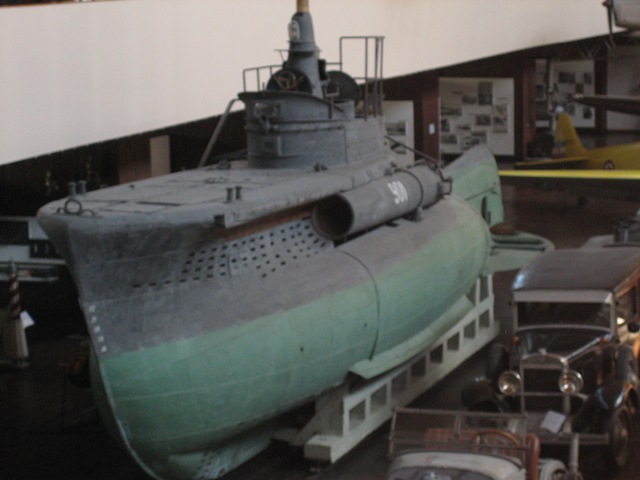
Malisan CB-20, former Italian midget sub
-Corvette Partizanska: Ex-Flower class HMS Mallow, transferred in 1944, returned in 1946, old name, transferred Egypt 28 October 1948 as Sollum.
-Tara: Hrabi class sub (1927). 4-in gun removed 1950, TS until 1958.
-Malisan: Former Italian CB-20 (1943), captured from Germans April 1945, fate unknown.
-Golesnica: Former TB, T1 class (1913), rearmed postwar with 2×40 mm, 4×20 mm, TT removed. Stricken 1959
-Cert: Former T5 class (1915), same story here. Stricken 1962.
-Orjen class MTBs: (1937) renamed TC-5, 6 stricken 1963.
-Higgins PBs: MBTè1-8 78fr types transferred bu the RN 1944 at Malta. Stricken 1969.
-Italian RD boats: 7 obtained as war reparations, stricken 1950s.
-Orao class Minesweepers (German M type 1945). 1 returned 1945, as Pionir, Zelenogora.
-Malinska class, 3 captured by the Italians, returned 1945, renamed M31-33, discarded 1950s, rearmed 47 mm gun.
-2 MFP type landing crafts, 2 MZ class landing crafts, 2-3 Siebel Fahres.
Post-Stalin Era
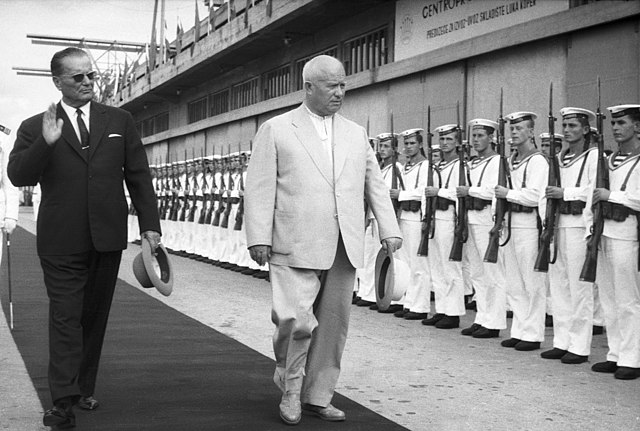
Pdt. Tito and Soviet premier Nikita K. reviewing Yugoslavian crews in 1963.
After Stalin’s death, Tito improved relations with the Soviet Union. As a result he was able to balance Yugoslavia between the Soviet Union and the US | playing one off against the other and acquiring economic and military aid from both the great powers at once. In the longer term this policy led Tito to a doctrine of non-alignment while at the same time buying Soviet weapons. These purchases, together with building in Yugoslav yards, enabled the second naval programme to take place during 1962-74. The navy was upgraded in the 1960s when it acquired ten Osa-I class missile boats and four Shershen-class torpedo boats from the Soviet Union. The Soviets granted a license to build eleven additional Shershen units in Yugoslav shipyards developed for this purpose.
Soviet deliveries comprised thus ten ‘Osa’ class missile craft and four ‘Shershen’ class torpedo craft. Licence production allowed to complete ten more boats. Four British Ham class inshore minesweepers were built in Yugoslavia under the US Military Aid Programme. Yugoslavia’s own production consisted of three Heroj class submarines, ten patrol boats and seven inshore minesweepers. The emphasis in the navy shifted to submarine and light forces as most of the war-built warships were deleted by the early 1970s.
1975 3rd naval Plan
The third naval programme was started in 1975 and based mainly on locally designed and built warships, fitted with either Soviet or Western armament, sensors and propulsion systems. By the early 1980s the programme reached its half-way point with two ‘Koni’ class fngates purchased from the Soviet Union and locally built craft as follows: two Sava class submarines, eleven Type 601 LCUs, six Rade Konéar class FAC(M)s and seven Nestin class river minesweepers. Increasing growth resulted in the enhancement of the navy’s status within the Yugoslav armed forces and in 1980 81 the post of Deputy Chief of the General Staff for Naval Forces was created.
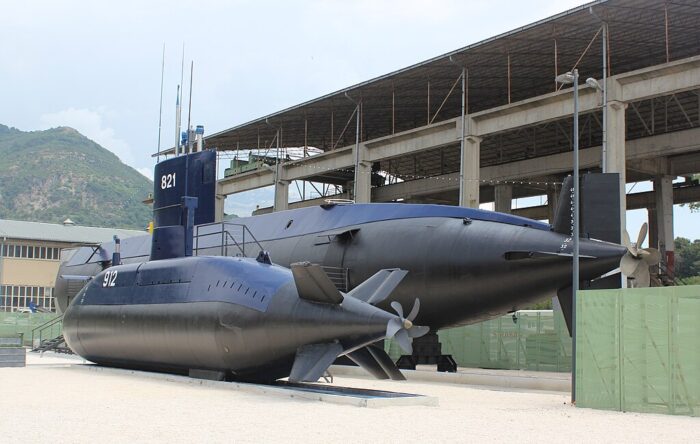
Former Yugoslav Navy submarines Heroj (P-821) and Una (P-912) in the Museum of Maritime Affairs in the port of Porto Montenegro, Tivat.
The late cold war
This period was also marked by a growing maturity of the Yugoslav naval shipbuilding industry, which during the 1980s won several foreign contracts for the construction of training frigates (Iraq and Indonesia), midget submarines (Soviet Union, Sweden, North Korea and Libya) FAC(M)s (Libya), patrol craft (Sudan) and river minesweepers (Hungary, Iraq). In 1988 for the first time Yugoslavia exhibited at ‘Defendory International’, offering submarines and training frigates. In addition various yards repaired and overhauled Soviet and Libyan surface ships and submarines. However further development was restricted by the limited availability of advanced Western weapon systems. Despite dissatisfaction with the performance of the Soviet ‘Styx’ type missiles, Yugoslavia was not able to obtain either Harpoon, Exocet or Penguin missiles. The frigate built for Indonesia had electronics and modern weapons fitted in the Netherlands.
In the early 1980s a major problem for the Yugoslav Navy was the approaching obsolescence of several of its small combatants, ASW cract, minesweepers, LCTs and the auxiliary vessels, the latter being small and ageing. The construction programmes for the 1980s included Kotor class frigates, ‘Lora’ class submarines, midget submarines of the Mala and Tisa classes, ‘Sliba’ class LCTs, a second batch of Type 601 LCUs, ‘Kobra’ class FAC(M)s, Biokovo class patrol craft and Lubin class transports/landing craft. Moreover, replacement of outdated ‘Samlet’ coastal defence missiles with truckmounted ‘Styx’ and some naval aviation has been planned. Apparendy modernisation of the ASW and MCM forces was planned for the early 1990s, but completion of these programmes was hampered by an economic crisis and domestic unrest since the mid-1980s. The army’s budget was reduced from 5.2 per cent to 3.85 per cent of GNP and a reduction of a further 13 per cent was planned. As a result of budgetary cuts the construction of ‘Lora’ class submarines as well as ‘Kobra’ class FAC(M)s was cancelled while other elements of the modernisation programme were also affected. Despite these problems, in 1990 the Yugoslav Navy had the largest surface and submarine force among eastern European countries, while the small combatants force was at a similar level to those of Poland and East Germany. However the ASW, MCM and auxiliary forces were inferior and were hampered by maintenance and servicing problems of old and foreign-built ships.
Unlike the other European communist regimes, Yugoslavia commenced the 1990s without significant political upheavals; the comparatively liberal Belgrade regime had provoked no_ strong pepular opposition of the type which had overthrown more oppressive regimes elsewhere in eastern Europe. However, after a series of elections held during 1990 non-communist governments were formed in most of the Yugoslav republics. Freed from ideological ties to the communist federal authority, the republics of Slovenia and Croatia proclaimed their independence in June 1991. This provoked military reaction by the Federal Army, dominated by Serbia, which claimed a large part of Croatian territory. Military operations sparked civil war, which continues.
In 1990, it had 10,000 sailors (including 4,400 conscripts), including 2,300 in 25 coastal artillery batteries and 900 marines in one light naval infantry brigade.[1] Following the breakup of Yugoslavia, the navy’s equipment and watercraft were claimed by emergent Croatian Navy, Montenegrin Navy, Serbian River Flotilla, and Slovenian Navy.
Ships of the 1960s
 Destroyer Split (1950)
Destroyer Split (1950)
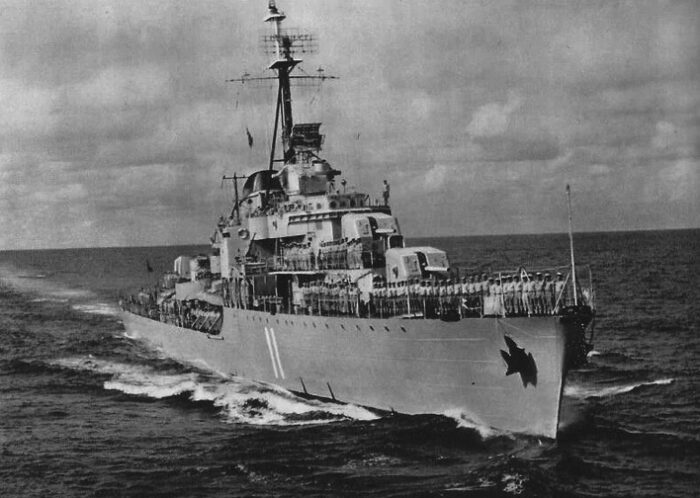
Certainly one of the most interesting ships of the early Yugoslavian Navy was Split, built at Jadranska Brodogradilista in Split, originally laid down for the Royal Yugoslavian Navy a large destroyer initially designed by French Yard A C de la Loire as a development of of the british-built Dubrovnik (1931). The original design planned five 140mm/56 Škoda guns, ten 40mm/56 Swedish twin Bofors AA and eight 15 mm/80 heavy machine guns (Likely MG151), two triple 533 mm torpedo tubes (probably French) and 30 mines (French also), for a displacement of 2400t standard and 3000t fully loaded, 114.8/120.0 meters long oa, 11.3m in beam and 3.48 mean draught. Her machinery however was purchased in Britain,
with two shafts and two sets of Parsons geared steam turbines mated to three Yarrow boilers for 55,000 hp and 38 knots. Being an Adriatic ship, oil was not a concern so she only carried 31.5t. Range in unknown.
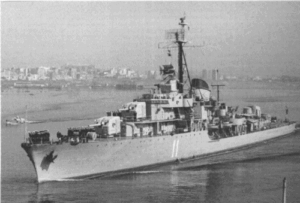 Laid down in July 1939, Split was captured by Italian troops on slipway 18.4.1941, probably 90% complete before launch. Italians experts certified she could be completed for the RM and renamed her Spalato, making efforts to launch and complete her under an Italian design with five single 135mm/45 guns, 5 single 37mm/54, 4 twin 20mm/65 MGs, one triple 533mm TT. The machinery was reordered for Tosi. In 1943 she was launched, but she was never completed, due to lack of manpower and parts, she was 50% complete when Italy surrendered in September. On 20.9.1943 Partisans retook the port and scuttled her in dock at Split to avoid seeing her completed by the Germans. She was indeeed captured by German troops, salvaged, but work never resumed and she was again scuttled asd they ecavuated Split in 1944, other sources stating she was sunk by allied aviation. She was salvaged, towed to Rijeka, and her design was completely changed to integrated US armament and radars. She was launched at “3 Mai Brodogradilista” yard in Rijeka, in March 1950 as a “Yugoslavian Fletcher” (specs below).
Laid down in July 1939, Split was captured by Italian troops on slipway 18.4.1941, probably 90% complete before launch. Italians experts certified she could be completed for the RM and renamed her Spalato, making efforts to launch and complete her under an Italian design with five single 135mm/45 guns, 5 single 37mm/54, 4 twin 20mm/65 MGs, one triple 533mm TT. The machinery was reordered for Tosi. In 1943 she was launched, but she was never completed, due to lack of manpower and parts, she was 50% complete when Italy surrendered in September. On 20.9.1943 Partisans retook the port and scuttled her in dock at Split to avoid seeing her completed by the Germans. She was indeeed captured by German troops, salvaged, but work never resumed and she was again scuttled asd they ecavuated Split in 1944, other sources stating she was sunk by allied aviation. She was salvaged, towed to Rijeka, and her design was completely changed to integrated US armament and radars. She was launched at “3 Mai Brodogradilista” yard in Rijeka, in March 1950 as a “Yugoslavian Fletcher” (specs below).
As such, she was completed after much extra work on 4 July 1958, and stayed in service until 1980.
In the final version she apparently kept her original British machinery, had a single, but quintuple torpedo tubes bank (US pattern), four 5-in/38 DP guns, a quad, two twin, four single US bofors, two Hedgehog and depht charges racks and launchers, and even more mines that before. Her beam was augmented, as her final displacement, her speed was lowered to 31 knots. She had standard Fletcher type electronics, see notes. Before disposed of, her worn out machinery had only a single boiler serviceable.
⚙ Split 1958 specifications |
|
| Displacement | 2400/3200t FL |
| Dimensions | 120/12/3.70m |
| Propulsion | 2 sets Parsons GST, 3 Yarrow boilers, 50,0000 hp |
| Speed | 31 knots |
| Range | Unknown |
| Armament | 4x 5-in/38, quad 40mm/60 Mk 2, 2×2 40mm/60 Mk 1, 4x 40mm/60 Mk 3, 1×5 533mm TT, 2×24 178mm Hedgehog Mk 15 ASWRL, 6 DCT, 2 DCR, 40 mines |
| Sensors | SC, SG-1, Mk 12.22 radars, QGA sonar |
| Crew | 240 |
 Kotor class destroyers (1956)
Kotor class destroyers (1956)
Kotor and Pula were two ex-W class destroyers built in Britain J. Brown in 1943, HMS Kempenfelt and Wager, aqcuired in October 1956, refitted in a local yard and recommissioned as K21 and K22, Kotor and Pula. Seemingly they kept their original configuration, and were discarded in 1971. Same as the original, armed with four 120mm/45 CP Mk 22, a twin 40/60 Mk 4 Hazemeyer, single 40/60 Mk 3, four twin 20mm/70 Mk 5, two quad 533mm TT, 4 DCT, 2 DCR (130 depth charges). Radars type 272 or type 276, type 285, type 291 radars, type 144 sonar.
Ships of the 1980-90s
 Split class Frigates
Split class Frigates

KONI I type, VBP-31-32, acquired in 1980 and 1982 from Zelenodolsk. Armament modified for Yugoslavia: Four SSN-2C Styx SSM, one SA-N-4 Gecko, two twon 76 mm DP guns, two twin 30 mm guns, two RBU-6000 ASWRL, and mines. VBP stands in Yugoslavian for “Large Patrol Vessels”. First missile-armed Yugoslavian vessels, as Split and Kopar, replacing the W class destroyers. Kopar stricken in 1995, Split in 2002, used as TS for the Kotor class Frigates.
To be more precise, RF-31 Split (1993: Beograd) was withdrawn and scrapped in August 2013.
RF-32 Koper (from 1993 Podgorica) was withdrawn in 1995, partially cannibalised in 2007, sold to Yugoimport for more cannibalisation, remnants scrapped in 2008 at Tivat Arsenal.
Electronics: MR-320 Topaz-2V, Fut-N, Don, 4R-33, MR-105 Turel, MR-104 Rys radars, MG-311 Vychegda sonar, Bizan 4B ECM suite.
 Kotor class Frigates
Kotor class Frigates
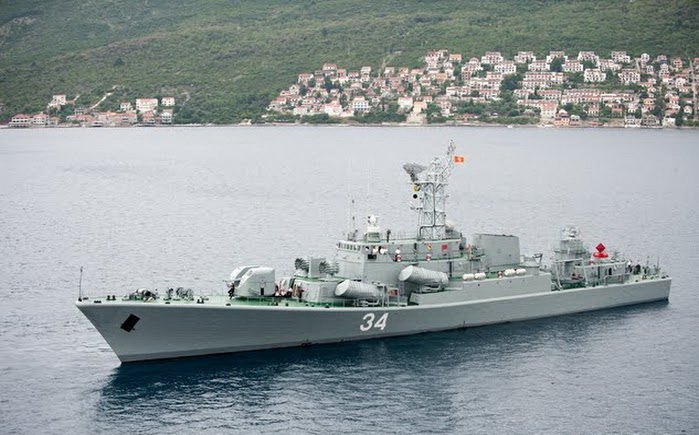
The Kotor class (Veliki Patrolni Brod (VPBR 33, 34) were light missile frigates built in Yugoslavia in the 1980s at the Kraljevica Shipyard, Croatia. Development started late 1970s for a ship capable of projecting power beyond the coastal regions and replace the old W class destroyers. Designs drafted at the Zagreb Naval Institute in 1982, modelled after the Koni-class but with a very modified superstructure and forward SS-N-2 anti-ship missiles canisters. Probably the most interesting surface vessels of the Yugoslavian Navy after the destroyer Split. Laid down in 1981-82, launched 1984-86, completed 1988, after the civil war they were attributed to the Montenegrin Navy and were Withdrawn from service by 2019.

⚙ Kotor class specs. |
|
| Displacement | 1700t standard; 1900t full load |
| Dimensions | 317ft 3in x 42ft x 13ft 9in 96.7m x 12.8m x 4.2m |
| Propulsion | 3 shafts, CODAG 2 SEMT-Pielstick 12PA 6V80 diesels + gas turbine, 9600bhp + 18,000shp |
| Speed | 27kts |
| Range | 1800nm at 14kts |
| Armament | 4 SS-N-2C SAM (4×1), 1 SA-N-4 SAM (1×2), 2-76mm (1×2), 4-30mm (2×2), 6-324mm Whitehead A 244 ASW TTs (2×3), 2 RBU-6000 ASW RL (2×12), mines |
| Protection | 2 Wallop Barricade chaff |
| Sensors | Radar Strut Curve, Palm Frond, PEAB 9LV200, Drum Tilt, Pop Group, High Pole, Square Head; sonar hull mounted |
| Crew | 110 |
The saga of Yugoslavian submarine

The old Tara, of the Hrabi class, modified Vickers L-Type, still used until 1958 as training sub.
Unlike many Warsaw Pact countries, Yugoslavian did not asked and did not received typical Project 613 (Whiskey) submarines, and instead designs its own in the same bold manner as some surface vessels later. This was not the simplest proposition, although these models were tailored for the shallow waters of the Adriatic which more so than the Baltic, had its fair share of peculiarities.
In all, Yugoslavia operated c16 submarines.
The first two were Italian: The midget CM type, CM-20 renamed “Malisan” and the first Sava, former Flutto-class Nautilo, formerly in German hands and sunk on its shores in 1944, refloated and repaired in 1949, recommissoned. Her a major refit in 1960 was to stremline her conning tower and delete her gun, so she could operate until 1971.
This valuable experience, compounded by previous the use of the Tara, Hrabi class, set a course for the design of the firsy Yugoslavian submarines, the Sujetska class. The hull was very much a repeat of the Flutto but with an improved streamline conning tower. The next generation were the 1960s Heroj class, which hull and conning tower were all streamlined. They carried Soviet sensors and armament. Again, these three boats were relatively small, but still twice as heavy than the Sujetska (1350t underwater versus 820 for the Sujetska). And there was the second class of 2nd generation 1970s subs, the Sava class, all comparable to small northern european submarines of the same generation. The last class were the “Lora”, improved Sava of 900t capable of a longer range and deeper depht for the Mediterranean. The 1987 order was cancelled. Instead, Split was tasked in the 1980s to create the midget Una class for special operations. In same same vein, Yugoslavian also designed interesting swimmer divery vehicles and “chariots” in the tradition of WW2 to deliver mines in naval bases undetected, carried by the the “Una” class midgets.
On these, read about the exhaustive article by expert HI Sutton.
 SUTJESKA class submarines (1958)
SUTJESKA class submarines (1958)

Class: Uljanik Yd (Pula): P811 NERETVA, laid down 1957 launched 1959 comp. 1962, P812 SUTJESKA 1957, launched 28.9.58, comp. 16.9.60. Both Stricken 1987.
The design was done in Yugoslavia but from they started their included Soviet radar and sonar. Their 1970s granted them a modernised sonar.
Very little info. Wild query: “Razred podmornic Sutjeska”.
Specs:
Displacement: 700t standard; 8201/945t
Dimensions: 196ft 8in oa x 22ft x 15ft 9in 60.0m x 6.6m x 4.8m
Machinery: 2 (?) shafts, 2 Sulzer diesels, electric motors, 1800bhp = 14kts/9kts.
Range 4800nm at 8kts Armament: 6-533mm TT (4 bow, 2 stern, 8 torpedoes)
Sensors: Radar navigational; sonar hull mounted
Complement: 38
 Heroj class submarines (1967)
Heroj class submarines (1967)
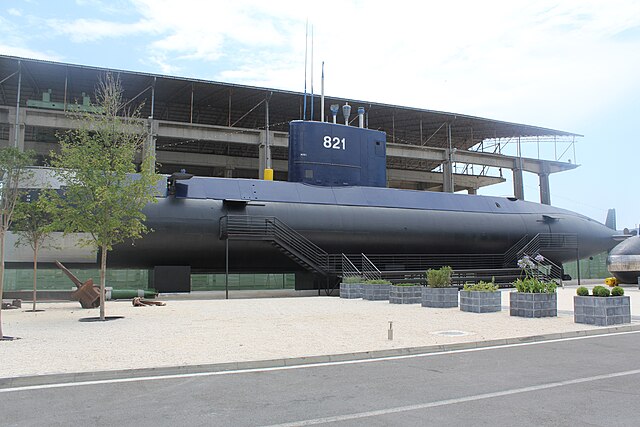
Class – Builder Brodogradilište specijalnih objekata, Split (now Croatia): Heroj (P-821), Junak (P-822), Uskok (P-823).
This new class featured a brand new streamlined hull design, four bow torpedo tubes usable for minelaying (12) and normally using six SET-65E active/passive homing torpedoes.
There are considerable discrepancies in data. Conways states they were 1170/1350t in displacement, other sources including wikipedia 614 t (604 long tons)/705 t (694 long tons) underwater.
Same for dimensions, either 64/7.2m or 50.40 m (165 ft 4 in)/6.68 m (21 ft 11 in).

Classic diesel-electric they had a single Končar electric motor mounted mated to two Mercedes diesel generators on a single shaft, cross tail, underwater speed of 10 knots (19 km/h; 12 mph), 15.3 kts underwater on snorkel, 9.8 knots surfaced. Diving depth was 210 m (689 ft) and range of 4,100 nmi (7,600 km; 4,700 mi). Whe completed they sported a “Stop Light” radar warning receiver, “Snoop Group” surface search radar and Thomson Sintra Eledone hull mounted sonar. During Heroj sea trials under 20 m (66 ft) the later reached 15.3 knots (28.3 km/h; 17.6 mph) when her fiberglass sail collapsed. It was reinforced on all three sisters, officially in service in 1969.
Fast forward and during the Croatian War of Independence all three were relocated from Lora Naval Base to Montenegro. The last two were decommissioned and scrapped but Heroj was decommissioned by 2004 and restored, preserved at Porto Montenegro Museum in 2013.
 SAVA class submarines (1977)
SAVA class submarines (1977)
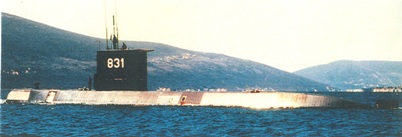 From the same yard, Sava (P-831)
From the same yard, Sava (P-831)
Drava (P-832) were improved Heroj. They had apparently a high degree of automation, and stilll Soviet sensors but new Swedish torpedoes as reported, as well as Soviet ECM and a diving limit at 1000 fr (300 m). Here again, specs diverged from Conways to most sources. They are doubts about their fitting with the “Orca-2000” torpedo fire control.
From Brodogradilište specijalnih objekata (Special objects shipyard) in Split they were launched in 1977-80 and completed in 1978-81.
Assigned to the 88th Submarine Flotille at Lora Naval Base in Split. October 1983: Drava suffered a hull breach linked to a design flaw but surfaced and was repaired. With the Croatian War of Independence both were relocated to Montenegro. The Major overhaul of Drava was stopped in 1996, she was decommissioned c1999. Sava was decommissioned in 2002. She were offered for sale and eventually sold for scrap in 2008.

Specs:
Displacement: Surfaced 770 t, submerged 964 t.
Dimensions: 55.9/55.7 x 7.2 x 5.1m (183 ft 5 in x 23fr 6in x 18ft 7in)
Propulsion: 1 shaft MTU diesel, Končar electric motor
Perfs: 10 knots (19 km/h; 12 mph) syrfaced, 16.5 knots (30.6 km/h; 19.0 mph) sub, max test depth 300 m (984 ft 3 in)
Armament: 6 × 533 mm (21.0 in) torpedo tubes (10 torpedoes, 20 mines)
Complement: 35
 UNA class midget submarines (19)
UNA class midget submarines (19)

Class: Una (911), Tisa (912), Zeta (913), Soca (914), Kupa (915)
Designed in Yugoslavia and built at Split under designation ‘M 100-D’ type, the Prototype was commissioned in May 1985, and the last in 1989. The Programme is possibly still in operation. Fitted with exit/re-entry chambers for divers, these vessels can carry up to eight combat swimmers backed by swimmer delivery vehicles (SDV) or wet chariots. Diving depth 345ft (50m). De‘igned to defend approaches to small shallow water harbours. Soca in Croatian hands since 1991, remainder extant 1995.
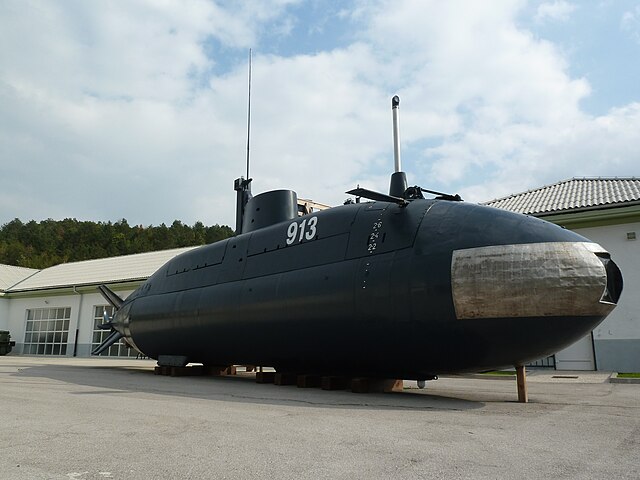
Specs:
Displacement: 76t/88t
Dimensions: 61ft 7in x 9ft x 8ft 2in 18.8m x 2.7m x 2.5m
Machinery: 1 shaft, 2 electric motors, 68hp: 6kts/8kts.
Range 200nm at 4kts
Armament: 4 ‘R2’ SDVs or 6 ‘R1’ chariots or 6 limpet mines
Sensors: Sonar Krupp-Adlas hull mounted
Complement: 6
 Mala class swimmer delivery vehicles (1980s)
Mala class swimmer delivery vehicles (1980s)
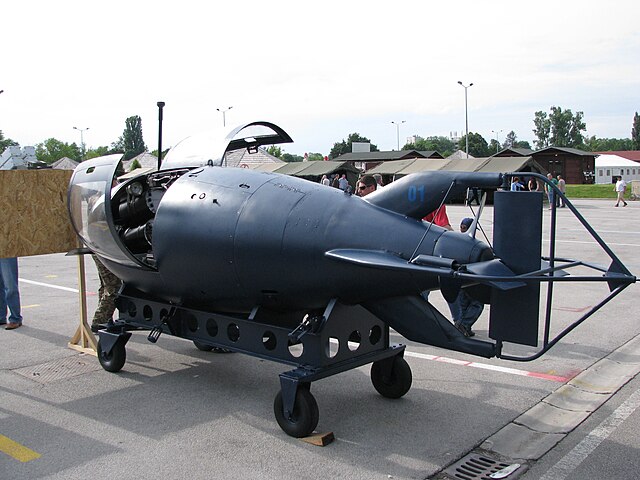
This type, designated ‘R2’, was designed in Yugoslavia and has been built locally since the early 1980s. Four were delivered to the Yugoslav Navy and several to the Soviet Union, Libya and Sweden. Free flooding submersible craft constructed of aluminium alloy and plexiglass. The pressure hull consists of separate watertight cylinders containing the motor, lead-acid batteries, navigation and electronic equipment. Can be carried by large submarines as well as by ‘Una’ class midgets. Maximum operating depth 200ft; can carry up to 0.25t of armament (limpet mines). Batteries can be charged only from depot ship or from shore. Two reported captured by the Croatians in 1992, and two extant 1995.
An article from 2010 revealed that the Armed Forces of Croatia operated two vehicles assigned to the Special Operations Battalion’s 3rd Company that specialises in amphibious warfare. Designated R-2M they were modernised in 2009 in range and with a digital navigation system after being mothballed for 7 years.
Specs:
Displacement: 1.4t
Dimensions: 16ft 11in x 4ft 7in x 4ft 4in (4.9m x 1.4m x 1.3m)
Machiner:; 1 shaft, electric motor, 4.5hp = 4.4kts. Range 23nm at 3.7kts
Armament: limpet mines
Sensors: Sonar, navigation echo sounder
Complement: 2.
 Type R1 chariots (1980s)
Type R1 chariots (1980s)
Wet chariots which can be transported in submarine TTs or carried by ‘Una’ class midgets. Powered by silver-zinc batteries; normal operating depth 200ft.
Displacement: 0.145t
Dimensions: 12ft 2in x 3ft 5in x 10in (3.72m x 1.05m x 0.26m)
Machinery: 1 shaft, electric motor, 1.36hp = 3kts. Range 6nm at 3kts
Armament: mine.
Complement: 1
Yugoslavian Amphibious Warfare vessels:
 DTM 221 class landing craft
DTM 221 class landing craft
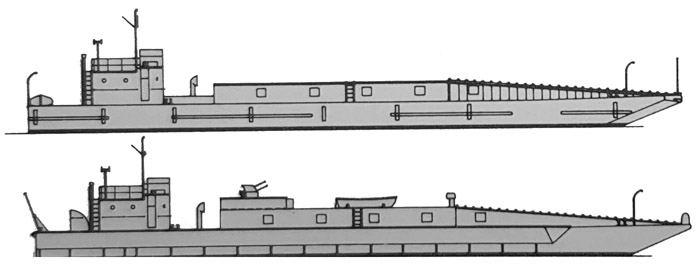
Class: DTM 211-212, 213, 214, 215, 216, 217, 218, 219, 220, 221 223, 224-225, 226, 227, 228 229, 230 231, 232 234, 235 236, 237, DSM $09, 513, 514.
Yugoslav built in the 1950s, based on the German Second World War MFP design. DTM = LST, DSM = LST/minelayer (1m sponsons added for mine rails). Two sold to Sudan in 1969. Thirteen deleted by 1990. 213, 215, 217, 221, 226, 228, 234 and 237 deleted 1990. 233 deleted 1991. 219, 222, 233 and 510 deleted 1992. Croatia took over 217, 501 and two others in 1991, and 229, 232, 513 and 514 remain in service with the Yugoslav Navy.
Displacement: 2401 standard; 4101 full load Dimensions: 144ft 3in 19ft 7in x 7ft (73 x 6.4 x 2.3m)
Machinery: 3 shafts, 3 Gray Marine 64HN® diesels, 625bhp = 10.3kts.
Range 500nm at 9.3kts
Armament: 3 20mm (3×1), 100 mines on 2 rails Complement: 15 (+200)
 Type 21 landing craft
Type 21 landing craft
Class: DFC 601-630 Fibreglass craft built at the Gleben Yard, Kortila, and delivered between September 1976 and 1979.
Catamaran type landing craft Ten 40t boats of the LCU type with a catamaran hull were built in the 1950s. Armed with 4-12.7mm MG (2×2), able to carry one light tank or one field gun. Could carry mines also. Stricken 1978.
On the 32sq m cargo space they can carry 6t of cargo or a landing detachment of forty troops. Some of the early vessels have been scrapped, and in 1995 only D¥C 604-606 and 608 610 were in service. Of the others D7C 629 was deleted in 1991 and D7C 607 and 6/1 in 1992. Four of the class were taken over by the Croatians in 1992, together with a further damaged pair which may have been repaired since. DJC = Desantni Furisni camac (LCA).
Specs:
Displacement: 32t full load
Dimensions: 69ft 9in x 15ft 7in x 5ft 2in (21.3m x 4.8m x 1.6m)
Machinery: 1 shaft, 1 MTU 12V331 TC81 diesel, 1450hp = 23kts. Range 320nm at 22kts.
Armament: 1x 20mm
Sensors: Radar Decca 101
Complement: 6
 Type 22 landing craft
Type 22 landing craft
Class: DFC 620-632 Total of twelve of these GRP boats were built locally during the 1980s, with the last completed in 1987. D7C 622 624 taken over by Croatia 1991, remainder extant 1995.
Specs:
Displacement: 48t full load
Dimensions: 73ft 2in x 15ft 7in x 3ft 3in (23.3m x 4.8m x 1.0m)
Machinery: 2 waterjets, 2 MTU diesels, 1740hp = 35kts.
Range 320nm at 22kts
Armament: 2-20mm
Sensors: Radar Decca 101
Complement: 8
 SILBA class landing ship
SILBA class landing ship
Class: Sdbar (YBM 2417)
A Ro-ro design, intended to replace DTM 277 craft, Built by Brodosplit, Spht and commissioned 1990, Can be used as a minelayer, carrying up to ninety. four SAG To munes. As a landing ship, can carry six medium tanks or 300 troops, A sister-ship was completed in 1993 for the Croatian Navy. Extant 1995.
Displacement: 8801 full load
Dimensions: 144f wi, 163M Lion FAN Sino AA Sin 93,8, 49 To x FOL ae 2 6
Machinery: 2 Shafts, 2 Alpha 1LOV2 AL. dicaets, WOOhp 17 kts, Range 1200nm at 1 kts
Armament: 4 SA N58 Grail SAM (Ded), 4 30min AK 230 (2×2), 4 20mm M75 (1×4)
Sensors: Radar surtace seanh
Complement: 43
SMALL SURFACE COMBATANTS
 Biokovo class TBs (1949)
Biokovo class TBs (1949)
Ex-Italian CICLONE torpedo-boats: Alteo and Indomito were transferred to Yugoslavia in 1949 as war reparations and commissioned as Biokovo and Trigiav respectively. Fitted with US sensors, Stricken 1971.
 Durmitor class TBs (1949)
Durmitor class TBs (1949)
Ex-Italian ARIETE class torpedo-boats The prototype of this class, Arete, was transferred in 1949 as war reparations and commissioned as Durmitor. Two others of this class TA 46 (ex-Balestra) and TA 47 (ex-Fionda) seized incomplete by the Germans in 1943 were taken over by the Yugoslav Navy in 1948 and renamed Ucka and Velebit respectively, Only Ucka was finally completed in 1949 and unlike Durmitor her original armament was changed to 2 100mm/47 (2×1), 3-40mm (3×1), 2 DCT and 28 mines. Durmitor was stricken in 1963, Ucka in 1968.
 P101
P101
Class: P 101 to P199
A total of 96 TYPE 108 fast attack craft (torpedo) were built in Yugoslavia (1951-60) to the design of the US Higgins 78ft type PT boats. Six sold to Egypt in 1956, two to Ethiopia in 1960, two to Cambodia in 1964 and six to Sudan in 1970. In 1963 about twenty-four boats were converted to MGBs by removal of the TTs and mounting one additional 40mm gun forward instead, being designated Type 158. Their speed did not exceed 24-26kts at that time and they could carry 2-4 mines in addition to the above armament. The unconverted boats were sold to civilian enterprises or subsequendy scrapped. The last six converted boats were stricken in 1979.
Specs:
Displacement: 55t standard; 60t full load
Dimensions: 69ft pp, 78ft oa x 21 ft 3in x 7ft 8in (21.0m, 23.8m x 6.5m x 2.4m)
Machinery: 3 shafts, 3 Packard petrol engines, 5000bhp = 36kts
Armament: 140mm, 2-0.5in MG, 2-18in TT (see notes)
Complement: 14
 Soviet ‘SHERSHEN’ class fast attack craft (torpedo)
Soviet ‘SHERSHEN’ class fast attack craft (torpedo)
Class: Topcider (TC 214), Ivan (TC 215), Jadran (TC 216).
Soviet built boats, acquired in 1965. TC stands for “Torpedni Camac” (torpedo boat). Ivan extant 1995, others deleted 1993.
 TYPE 201 fast attack craft (torpedo)
TYPE 201 fast attack craft (torpedo)
Class: Biokovac (TC 218), Cruena Zvezda (TC 220), Kornat (TC 217), Napredak (TC 223), Partizan II (TC 222), Partizan II (TC 221), Pionir If (TC 224), Proleter (TC 213), Sojelko (TC 219), Partizan (TC 212), Pionir (TC 211)
Licenced version of the Soviet ‘Shershen’ class, built 1966-71 by the Tito Yard, Kraljevica. Have no DC racks fitted, unlike the Soviet-built boats, Par azan III and Srrelko taken over by Croatia in 1991, though the latter was damaged beyond repair. Five further boats deleted 1992. Biokovac, Pionir II and Proleter extant 1995.
 Soviet ‘OSA I’ class fast attack craft (torpedo)
Soviet ‘OSA I’ class fast attack craft (torpedo)
Class: Franc Rozman-Stane (RC 309), Josip Mazar-Sosa (RC 307), Karlo Rojc (RC 308), Mitar Acev (RC 301), Nikola Martinovic (RC 306), Petar Drapsin (RC 303), Filipovic Steva (RC 304), Velimir Skorpik (RC 310), Viado Bagat (RC 302), Zikca Jouanovic-Spanac (RC 305)
Soviet built, transferred during 1965 69. RC = Raketnt Camac (rocket boat), Skorpik and the badly-damaged Acev taken over by Croatia. Bagat, Drapsin and Rosman-Srane deleted 1992 and cannibalised. Remainder extant 1995.
Nos 201, 203 experimental MTBs: Two experimental boats had been built under the first ten-year programme but further construction was abandoned because of design shortcomings. About 20t displacement and about 30kt speed (1 TT) applied to one of these boats at least.
 TYPE 240 fast attack craft (missile)
TYPE 240 fast attack craft (missile)

Class: Rade Koncar (RT 401, 15.10.76), Vlado Cvetkovic (RT 402, 28.8.77), Ramiz Sadiku (RT 403, 1978), Hasan Zahirovic Laca (RT 404, 1979), Fordan Nikolov-Orce (RT 405, 1979), Ante Banina (RT 406, 1979)
These combined missile-gun combatants were designed by the Naval Shipbuilding Institute of Zagreb and built by the Tito Yd, Kraljevica. Truly international boats close in design to the Swedish Spica class and equipped with Bofors guns, Soviet missile system (chosen in preference to Exocet), British turbines, German diesels and Dutch radar systems. RT = Rakema Topovnjaca. In service dates RT 401 Apr 1977, RT 402 Mar 1978, RT 403 10.9.78, RT 404 Nov 1979, RT 405 Aug 1979 and RT 406 Nov 1980. Cvetkovic taken over by the Croatian Navy in 1991, possibly followed by a second. Of the remainder, one was heavily damaged and only three were operational 1995. Four of this class were to be ordered by Libya during the late 1980s, but were cancelled.
Specs:
Displacement: 240t full load
Dimensions: 147ft 6in x 27ft 6in x 8ft 2in (45.0m x 8.4m x 2.5m)
Machinery: 4 shaft CODAG (4 CP propellers): 2 shaft Rolls-Royce gas turbines, plus 2 MTU diesel engines, 7200hp + 8530hp = 39kts.
Range 880nm at 23kts
Armament: 2 SS-N-2B Styx SSM (2×1), 2-57mm/70 Bofors (2×1)
Sensors: Radar Decca 1226, Philips TAB, Square Tie
Complement: 30
 TYPE 400 ‘KOBRA’ fast attack craft (missile)
TYPE 400 ‘KOBRA’ fast attack craft (missile)
 c
c
Designed by the Naval Shipping Institute in Zagreb as a variation of the export VAC(M) ordered by Libya in 1985 at the Tito Yard, Kraljevica. Order for the Yugoslav Navy suspended in 1989 because of economic problems. In 1991 two boats under construction were taken aver by the Croatians.
Specs:
Displacement: 385t standard; 525t full load
Dimensions: —179ft 10in x 29ft 6in x 8ft 3in 54.8m x 9.0m x 2.5m
Machinery: 4 shafts, 2 Rolls-Royce Proteus gas turbines + 2 MTU diesels, 18,800shp = 40kts. Range 1000 500nm at 20/35kts
Armament: 8 RBS-25 SAM (8×1), 1-3in OTO-Melara, 440mm Breda-Dardo (2×2), 8 20mm (2×4)
Complement: 30
Patrol Ships
 Udarnik (1956)
Udarnik (1956)
The ex-French FOUGUEUX class submarine-chaser One unit (ex-US PC 1615) designated P 6 (aunched 21 December 1954) was delivered by CN Le Havre, for the Yugoslav Government thanks to US ‘offshore’ procurement funds. She was completed and commissioned in January 1956 as Udarnik (PBR 51). Stricken 1988.
 MORNAR class Jarge patrol craft
MORNAR class Jarge patrol craft

Class: Mornar (PBR 551, 1958), Borac (PBR 552, 1965).
Built by the Tito Yd, Kraljevica, to an improved design of the French “Le Fougueux” class with increased armament. Both modernised 1970-73 by the Naval Repair Yard in Trivat; with Soviet sonar and ASW equipment, the 76mm guns being removed. Deleted 1992.
Specs:
Displacement: 330t standard; 430t full load
Dimensions: 170ft pp, 174ft 8in oa x 23ft x 6ft 6in 51.8, 53,3 « 7.0m « 2.0m
Machinery: 2 shafts, 4 SEMT-Pielstick diesels, 3240bhp = 24kts, Oil 55t. Range 3000/660nm at 24/12kts
Armament: 2 76mm (2×1), 2-40mm (2×1), 2 20mm (2×1), 4 RBU-1200 ASW RL (4×5), 2 Mk 6 DCT, 2Mk9DC racks
Sensors: Radar Decca 45; sonar Tamir-II
Complement: 60
 TYPE 501 ‘KRALJEVICA’ class large patrol craft
TYPE 501 ‘KRALJEVICA’ class large patrol craft

Class: PBR 501 to PBR 508
Built by the Tito Yard, Kraljevica (1953-56), this design was abandoned in favour of the improved Type 509 design. PBR 502 and PBR 505 were sold to Bangladesh in 1975. During the later 1970s the US 3in gun and the Hedgehog were removed in favour of 2 RBU-1200 ASW RL (2×5) with Soviet Tamir-11 sonar. PBR 504 and PBR 506 reportedly carried names Napred and Funak respectively. Stricken 1983 86.
Displacement: 195t standard; 220t full load
Dimensions: 134 ft 5in x 20ft 7in x 5ft 7in 41.0m x 6.3m x 1.7m
Machinery: 2 shafts, 2 diesels, 3000bhp = 17kts. Range 1000nm at 12kts
Armament: 1-3in Mk 22, 140mm, 4-20mm (4×1), 2 Mousetrap or 1 Hedgehog, 2 Mk 6 DCT, 2 DC racks
Sensors: Radar Decca 45
Complement: 45
 TYPE 509 ‘KRALJEVICA’ class large patrol craft
TYPE 509 ‘KRALJEVICA’ class large patrol craft
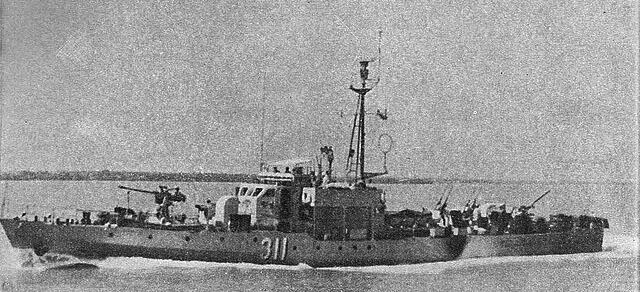
Class: PBR 509 to PBR 524.
Built by the Tito Yard, Kraljevica, (1957-59) to the improved and longer design of the Type 501. PBR 513 to PBR 518 were sold to Indonesia in 195859, PBR 522 to PBR 523 to Sudan in 1969 and PBR 509 to Ethiopia in 1975, The remaining eight including Srejko (PBR 520), Maryan (PBR 521) and Proleter (PBR 524), were stricken 1983 90.

Specs:
Displacement: 210t standard; 235t full load
Dimensions: 141 ft 5in x 20ft 7in x 6ft 43.1m x 6.3m x 1.8m
Machinery: 2 shafts, 2 MAN W8V 30/38 diesels, 3300bhp = 19kts. Range 1000nm at 12kts
Armament: 1x 76mm, 1x 40mm, 4x 20mm, 2 Mousetrap or 1 Hedgehog, 2 DCT, 2 DC racks
Sensors: Radar Decca 45
Complement: 49
 TYPE 132 coastal patrol craft
TYPE 132 coastal patrol craft
Class:
Specs
Displacement: 85t standard; 120t full load
Dimensions: 911 1in 24ft 8in x 8ft 3in (28.0m x 4, Sm x 2.5m)
Machinery: 2 shatts, 2 MTU M8820 diesels, 2200hp = 17kts
Armament: 6 20mm Hispano Suiza HS831 (2×3)
Sensors: Radar Kelvin-Hughes 14/9
 Mirna class patrol craft
Mirna class patrol craft
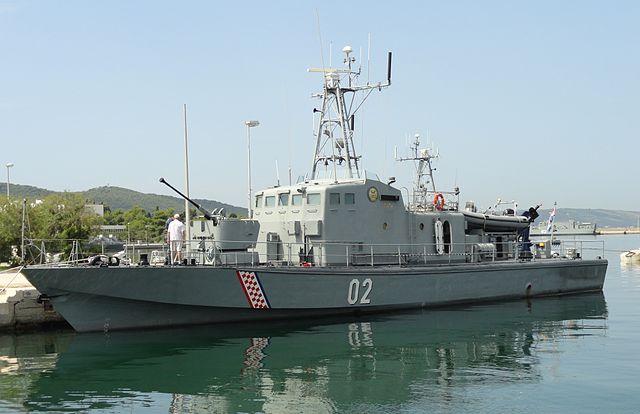
Class: Biokovo (PČ-171), Pohorje (PČ-172), Koprivnik (PČ-173), Učka (PČ-174), Grmeč (PČ-175), Mukos (PČ-176), Fruška Gora (PČ-177), Kosmaj (PČ-178), Zelengora (PČ-179), Cer (PČ-180), Durmitor (PČ-181)
The Mirna class (Type 171 in some sources) were patrol boats built for the Yugoslav Navy by Tito’s Kraljevica Shipyard to repleace the Type 131 boats, commissioned in the early 1980s for the JRM Maritime Border Brigade. After the Croatian War of Independence, two were damaged and captured by Croatian forces, two more in Šibenik Shipyard in the Battle of the Barracks. All four recom. in Croatian Navy, active 2017. Remaining seven relocated to Boka Kotorska, pressed into the FR Yugoslavi, decommissioned early 2000s. Two went for the MoI, scrapped 2012, remaining five sold to civ. market.
Specs:
Displacement Standard 125 t, Full load 142 t
Dimensions 33.4 x 6.74 x 2.3 m (109 ft 7 in x 22 ft 1 in x 7 ft 7 in)
Propulsion: 2 shafts; fixed pitch props, SEMT Pielstick diesel engines 32 knots (59 km/h)/24 knots cruise
Range: 600 nm at 15 knots
Armament 1× Bofors 40 mm, 1× Hispano M-754 4×20 mm AA, MTU-4 9K32M Strela-2M, 2×2 double-barreled 128mm RL
Complement: 20
The 1992 Disbandment and civil war
Before the civil war, the Yugoslav Navy had 12,800 personnel (1500 officers and 11,300 men in 1991), of whom 3600 were afloat, 2300 in coastal defence (three coastal missile batteries armed with three twin launchers of the Soviet SS-C-3 ‘Styx’ type each and a few Swedish RBS-15, and twenty-four artillery batteries of 6in, 130mm and 85mm guns) and 400 in naval aviation; ratings were on one-year conscription. The 2000-strong naval infantry brigade deployed in the Bay of Cattaro was equipped and trained to undertake amphibious assault landings. The fleet headquarters were at Pula, Sibenik and Kumbor, and the main bases at Lora/Split, Pula, Sibenik, Boka Kotorska and Kardljevo. The Danube River Flotilla, with its main base at Novi Sad, as well as several local naval border detachments, were under the operational command of the Army. Naval aviation, with its base at Divulje, consisted of an ASW Helicopter Squadron (five Ka-28 ‘Helix’, fifteen Ka-25 ‘Hormone’) and an air liaison detachment (twenty Mi-8 ‘Hip’ and a few Aerospatiale-Soko SA-341 ‘Gazelle’). The Naval Air Brigade was part of the Air Force and comprised twenty RJ-1 ‘Jastreb’, eighteen RT-33 surveillance, twentyfour MIG-21 ‘Fishbed’ interceptors, eighteen ‘Jastreb/Orao-B’ fighter-bombers, two DHC-2 ‘Beaver’ and four CL-215 amphibians.
By 1994 the navy was almost entirely under Serbian control. Based in the Bay of Cattaro (Boka Kotorska), other bases and naval facilities having been lost to Croatia and Montenegro, it had retained some 80 per cent of pre-war warships, with 6000 personnel (including 4500 conscripts). This decline in personnel since 1991 suggests that a large part of the navy may be non-operational. The submarine branch may be having particular difficulties as the majority of sub-mariners were Croatian.
Successor’s Navy
To come in future update: Mine warfare vessels and misc. ships (monitors, riverine crafts, small patrol crafts, etc.)
Successor’s Navy
(Future Update)
Croatian role in the Yugoslavian Navy, and ship’s names
Archive: “Names of warships in the territory of the former Yugoslavia”
In the navy of the Kingdom of Yugoslavia, the first allocation of names to warships referred to ships obtained after the First World War in the distribution of Austro-Hungarian naval spoils of war. The new names were of a national character, and they were assigned (that is, changed) to ships that had them from before, while the others kept only the numerical designation.
The first names were given to the ships of the river war flotilla on which Yugoslav crews had been aboard since 1919. Thus, the monitors were named after Yugoslav rivers: Drava, Morava, Sava, Vardar, two more monitors were named Drina and Soča, and two river patrol boats were named Bregalnica and Neretva. Those two monitors and river patrol boats were confiscated in 1921 and assigned to other states.
The hulk ships got new names: Krka, Neretva, Skradin, Krivošije, Prvić, the old battleship Kronprinz erzherzog Rudolf was named Kumbor, the auxiliary ship Gigant was renamed Moćni, and the water carrier Naiad was renamed Sitnica. The torpedo boats, as in the Austro-Hungarian navy, the rest without a name and only received a numerical designation. Four torpedo boats of the former designation T (built in Trieste) were included in the fleet with new designations from T-1 to T-4, and the other four torpedo boats of designation F (built in Rijeka – Fiume) received designations from T-5 to T-8 .In the navy’s jargon, the torpedo boats were called “triestinka” and “fiumane”. The remaining four, by then completely obsolete and worn-out torpedo boats (one of them never even entered the machine, and the other three were soon scrapped) were designated T-9 to T-11.
Later acquired ships, minelayers (1923), were named after birds of prey: Hawk, Kobac, Eagle, Falcon, Seagull and Swan (previously named Raven). The light cruiser Niobe (1926) was named Dalmacija, and the newly built destroyers were named after the cities of Dubrovnik, Belgrade, Zagreb and Ljubljana. Motor torpedo boats were named after mountains – Dinara, Durmitor, Kajmakčalan, Orijen, Rudnik, Suvobor, Triglav and Velebit, while submarines were named – Hrabri, Nebojša, Smeli and Osvetnik. One series of minelayers built in 1930 in Kraljevica bore names with the same initial letter – Malinska, Meljine, Mljet, Marjan and Mosor.
Auxiliary ships were given names that denoted their purpose. Rescuer was a ship for rescuing submarines, Zmaj is the mother ship for seaplanes, and tugboats are named after their working characteristics – Strong, Strong, Diligent, Persisting. One ship (ex Greek Paxo of 50 t), purchased in Corfu for the needs of the Serbian army, bore the symbolic name Serbia until it was scrapped in 1932.
The numerous markings on the ships were single-digit numbers that started with one for each class of ships. Larger ships, destroyers and minesweepers, did not have a numerical marking and carried on the bow (written in both Cyrillic and Latin letters) a one-letter or two-letter combination of names, such as and the name of the ship written on the stern. Cruise ship Dalmacija only had its name written on it.
WW2 Partisan Navy (Navy NOVJ)
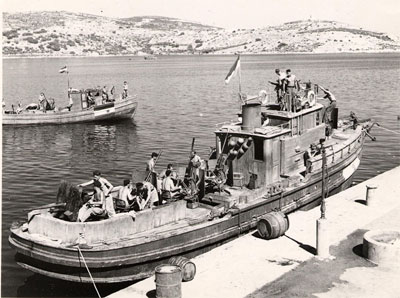 The first warships of the partisan navy in NOR bore names that symbolized the labor movement and the revolution. The ships of the Southern Dalmatian Navy detachment (1 naval detachment) had the name Pionir written on the mast, and the name Partizan was written on the confiscated motor sailing ship Evropa. One lieutenant was named Proleter.
The first warships of the partisan navy in NOR bore names that symbolized the labor movement and the revolution. The ships of the Southern Dalmatian Navy detachment (1 naval detachment) had the name Pionir written on the mast, and the name Partizan was written on the confiscated motor sailing ship Evropa. One lieutenant was named Proleter.
The warships of the NOVJ navy carried a two-letter combination (NB) or (PČ) with a numerical designation on the bow. The ships mostly kept their previous names, although some of them were changed when entering the machine. For example, the ships Tunolovac and Kolega from Kali on the island of Ugljan in the NOVJ navy became NB-3 Jadran and NB-8 Kornat. New names were also given to captured enemy ships that were included in the NOVJ navy. Thus, the German anti-partisan ship Anton (ex Bianca stella) became NB-11 Red Star, two German I-boats PČ-7 Osvetnik and PČ-8 Udarnik, and KJ-10 received the designation PČ-76.
nb-3-jadran The numbering of the armed ships was from number 1 onwards, as the adapted ships entered the machine. The numbers of patrol boats were determined according to a different scheme, so at the same time they indicated belonging to the flotillas of maritime coastal sectors. For example, patrol boats of II POS had reserved numbers from 1 to 20, III POS from 21 to 40, and IV POS- and from 41 to 80 because that sector also had the most watercraft.
Determining the names of the ships that were part of the NOVJ navy was also not, despite the wartime circumstances, left to chance. In the spring of 1944, the IV POS headquarters raised this issue, and the immediate reason was the equipping of a trawler that was part of the armed ships. In the document sent to the NOVJ navy headquarters on May 26, 1944, it was stated: “…The trawler that arrived from Monopoli and is now being armed in NB will receive the number NB-12. Since all armed ships have a name in addition to their number, and since will arrive even more trawlers that will be armed, this staff is of the opinion that all these trawlers should be given similar names since they are of the same type , Guerrilla, Proleter. If the navy headquarters agrees with this proposal, please inform us about it, or in the opposite case, to determine the names for the new armed ships…”
As can be seen from the quoted letter, the IV POS headquarters’ criteria for naming combat, armed ships of the NOVJ navy were commonly known and accepted names among NOVJ fighters.
Two days later, on May 28, the NOVJ navy headquarters, with its document no. 5300 gave his consent to the proposal of the IV POS headquarters and the newly armed trawler was named Borac in addition to the designation NB-12. It was the first name from the list proposed by the IV POS headquarters.
The name Partizan has become traditional in the NOVJ navy and a ship with that name has always been part of it. For example, when the NB-13 Partizan was sunk by the air force in the port of Olib on October 20, 1944, already on November 8, a new ship with the same name and designation was again included in the NOVJ navy. It was the third ship that bore the name Partizan during the NOR.
Names of Yugoslavian ships after World War II
A further regulation on naming ships was passed by the command of the Yugoslav Navy, also during the war. Order No. 10 of April 30, 1945, referred to auxiliary ships, tankers and fuel tankers. These ships, seized from the enemy or which were raised from the sea by the technical service of the NOVJ navy after sinking, were included in the composition of the NOVJ navy. and according to the order they were given the names of the Adriatic islands. Thus, peniša number 519, peniša number 24, peniša lifted from the sea in Zadar, peniša lifted in Lovište, then the tankers Kit, Ulješura, P.N.-G.R.-12 and Vrbano now bore the names Vir, Žut, Ist, Iž, Lavsa, Kluda, Maon, Sit and Orud.
Immediately after the end of the war, JRM ships were given new names. These were the ships of the Yugoslav navy returned from abroad, as well as enemy warships seized during the war and included in the fleet.
According to the order of the Minister of National Defense No. 892 of November 17, 1945, the minesweeper Orao was renamed to Pionir, the corvette Nada to Partizanka, and the yachts White Eagle, Sloboda (confiscated Amrita) and Vila to Biokovo, Mosor and Orijen. The auxiliary ships Sitnica and the seized Felice were renamed Vis and Sušac, the seized steamers Stefano, Tenacia Gennari (temporarily Raša) and Punta Planca (temporary Ploče) were renamed Cres, Lošinj and Lastovo, and the auxiliary ship Sloboda (ex Olga) was renamed Lavsa. The motorized gunboats were supplemented with the designation MT to MTP, keeping the numbers 1 to 7, while the three minesweepers of the Marijan type received only the numerical designations M-1, M-2 and M-3. The tugboats were also given only numerical markings and, according to the order of the Yugoslav Navy Command No. 40 of December 25, 1945, the steam tugboats were marked with the letter R, and the motor-driven tugboats with the letters MR. Other ships – confiscated enemy torpedo boats, landing ships, landing assault boats and ships of auxiliary purpose – received only numerical markings, as well as adapted fishing boats with which demining began in the Adriatic. These ships also bore the letter designation D (drager), that is, for a short time, the letters TŠ (from Russian Traljščik- minesweeper). Also, only numerical designations were given to two steam torpedo boats (formerly T-1 and T-5), as well as the motor torpedo boats Kajmakčalan and Durmitor of the pre-war Royal Navy.
This order, obviously incomplete because it referred only to those ships that were part of the JRM at the time, did not, therefore, represent fully established criteria for assigning names to warships. But even such an order unequivocally indicated that the criteria were established as a continuation of the military traditions of the NOVJ navy. The warships with the names Pionir and Partizanka were a continuation of the traditions of the first Partisan warship and one of the armed ships, yachts with the names of famous mountains from NOR, and the auxiliary ships with the names of the Adriatic islands, as was already decided earlier.
With the creation of the first fleet program, which began the construction and introduction of new warships into the machine, new regulations on ship names were also adopted. According to the order of the Supreme Commander of the Armed Forces number 347 of May 18, 1949, the classification of ships was carried out. Names were given only to larger ships, and they were determined in the JA General Staff on the proposal of the Navy Command.
According to the then perspective of the development of the fleet, the order predicted that cruisers would get the names of people’s republics and autonomous provinces, destroyers – names of ships from NOB and names of cities, guard ships – names of famous mountains from NOB. Large submarines would bear the names of rivers, also significant from the NOB, and the middle names of hydro-meteorological phenomena. Guard boats would get the names of military branches and specialties in JRM-JA, minelayers would get names of birds, and minesweepers – names of strong human and character traits.
Auxiliary ships – tankers, tugboats, transport and hospital ships – would be given the names of marine flora and fauna, yachts – popular women’s names, and floating bases and rescue ships – the names of artisans and workers.
Other ships – small submarines, basic (harbor) minesweepers, torpedo boats, as well as other auxiliary ships and vessels, received only numerical markings.
The ships of the river war flotilla – river minesweepers and river armored boats as well as ships on lakes – were also given only numerical markings. The Sava river monitor has kept its former name.
According to this order, the escort destroyers received from war reparations were placed in the category of guard ships and were given the names Triglav, Biokovo and Durmitor, and the seized Balestra, completed at the “Treći Maj” shipyard in Rijeka, was named Učka. Also two steam torpedo boats were, as guard ships, given the names Cer and Golešnica, and the earlier Pionir was renamed Zelengora. 801), and the confiscated (and later reconstructed) Tritone became the Sava (802). Also, the confiscated and reconstructed submarine Mališan had only the number 901. The yachts Biokovo and Orijen were renamed Jadranka and Istrenko names Split, Kotor and Pula (with numbers 11, 21 and 22), larger minesweepers named Hrabri, Smeli; Slobodni and Snačni with numbers 151, 152, 153 and 161, and new submarines built in Pula named Sutjeska (811) and Neretva (812 ).The school ship Jadran and the rescue ship Spasilac kept their traditional names, and the new school ship, intended for the role of minelayer in war, was named Galeb.
The names of the ships are written in Latin and Cyrillic letters on the stern part on the left and right sides, respectively on the tower near the submarines.
Ships built in series – torpedo boats, patrol and landing ships, as well as watercraft – were given only numerical markings. For combat ships, these were two-digit or three-digit numbers (e.g. Torpedo boats numbers from 101, patrol boats from 501, etc.), minesweepers had the designation M and a two-digit number, minesweepers also the designation M and a three-digit number, etc. Auxiliary ships carried a two-letter designation and a two-digit number. The first letter P stood for “auxiliary”, and the second for the purpose, such as the transport ship PT-21 Tunj, otherwise the confiscated enemy war transporter KT-6 (650 t) which at one time bore the name Krk.
New changes have always been followed by regulatory provisions, so the earlier order from 1949, which no longer satisfied the development and condition of the fleet, was supplemented by a new order number 214 of November 15, 1957. The changes applied to all types of ships, and the basis for naming is preservation and nurturing the traditions of NOR, the memories of the legendary fighters of the revolution and the memory of more important battles at sea and on the coastal belt.
A new order of the Supreme Commander (order number 38 of June 20, 1969) regulated the naming of all types of JRM warships, including second-generation missile ships. In the implementation of the order, as before, the republican representation was evenly maintained, as well as the continuation of the tradition of the ships previously in the composition of the JRM. According to the order, the names of the ships are assigned by the Federal Secretary for National Defense on the proposal of the VPO command.
According to the fleet almanac “Jane’s Fighting Ships 1990/91”, the names of the ships in the JRM are as follows:
rocket gunships and rocket boats bear the names of national heroes of Yugoslavia – rocket gunships bear the names: Rade Končar, Vladimir Ćetković, Ramiz Sadiku, Hasan Zahirović-Laca, Orce Nikolov, Ante Banina, and rocket boats: Mirče Acev, Vlado Bagat, Petar Drapšin, Stevan Filipović, Žikica Jovanović-Španac, Nikola Martinović, Josip Mažar-Šoša, Karlo Rojc, Franc Rozman-Stane, Velimir Škorpik. Submarines bear the names of Yugoslav rivers: Sava, Drava, Tisa, Una, Zeta, Soča, Kupa, Vardar or prominent human qualities: Hero, Junak, Uskok,
Large patrol ships-frigates bear the names of coastal cities, continuing the tradition of the names of earlier destroyers: Split, Kotor, Pula and Koper, torpedo boats-names of armed ships from NOR: Pionir, Partizan, Proleter, Topčider, Ivan, Jadran, Kornat, Biokovac, The Red Star, etc., and the patrol boats – Miran, Streljko, Marjan (and earlier also Udarnik, Naprijed, Napredak, etc.) are the names of patrol boats of the NOVJ navy, minesweepers bear the names of important battle scenes from NOR: Vukov Klanac, Podgora, Blitvenica, Gradac, Brseč, Olib, Iž (and also earlier Lastovo, Prvić, Lavsa, Brgulje, Kvarner, Mljet), patrol boats are named after mountains: Biokovo, Grmeč, Kosmaj, Pohorje, Učka, Kalnik, Velebit, etc., corvette patrol boats are named Mprnar and Borac, training boats are named Galeb and Jadran, hydrographic ship Andrija Mohorovičić, staff ship Vis, and the auxiliary ships – Meduza, Yastog, Alga, while earlier there were Lubin, Ugor, Kit, etc. The auxiliary rescue ship Spasilac is a new ship with the name of its predecessor.

P-913 Zeta at the Pivka Museum

RTOP-21 Sibenik

The submarine Heroj, naval heritage coll.
According to the same criteria, names are also assigned to RRF ships. River minesweepers are named: Neštin, Motajica, Belegiš, Bosut, Vučedol, Đerdap, Panonsko more, etc., the headquarters ships Šabac and Kozara, and smaller ships have only a numerical designation.
In JRM, the naming, or godfathering, of a ship is done when it is first launched into the sea, and for a ship acquired abroad, upon arrival in the homeland. The name of the ship is given according to the established ceremony prescribed by the rule of the ship’s service, and it is attended by the honorary military unit, members of the JRM, representatives of the shipyard’s work collective, representatives of the national government, social organizations, crews of SFRY merchant ships who happen to be in the port where the ceremony is held, as well as other guests.
Croatian ship’s names
The names of the ships of the HRM methodologically partly continue the names of the ships of the former JRM, of which the HRM is practically a successor. Namely, most of the JRM ships were built in shipyards in Croatia, and the names of the ships were suggested by the VPO Command, which was in Split.
The basic strike force of the HRM consists of three rocket gunboats (RTOP) of Croatian production. These are: petar-kresimir-ivRTOP-11 King Petar Krešimir IV (built in Kraljevica in 1992), RTOP-12 Dmitar Zvonimir (Kraljevica 2001). Which were named after Croatian kings. The others were named after cities that stood out for their persistent defense in the Homeland War.
These are:
RTOP-21 Šibenik (Kraljevica 1978, former RTOP-402 “Vlado Četković”)
Those two missile gunships acquired in Finland: RTOP-41 Vukovar (1985 Wärtsilä, Helsinki Finland), RTOP-42 Dubrovnik (1986 Wärtsilä, Helsinki Finland).
Patrol ships (OB): They were also named after cities that stood out in the Homeland War.
These are the captured ships of the former JRM, and they are: OB-01 Novigrad (it was built in Kraljevica in 1980. Former PČ – 171 Biokovo), OB-02 Šolta (1983. Kraljevica. Former PČ-176 Mukos), OB-3 Cavtat (1985 Kraljevica, former PČ-180 Cer), OB-04 Hrvatska Kostajnica (1984 Kraljevica, former PČ-181 Durmitor)
Training ship: BŠ-72 Andrija Mohorovičić (Built in 1971 Stocznia Pólnocna, Gdansk, Poland, former PH-33 Andrija Mohorovičić).
Rescue ship: BS-73 Faust Vrančić (1976. Tito Shipyard, Belgrade, former PS-12 Rescuer)
Mine hunter: LM-51 Korčula (Montmontaza Greben Vela Luka, 2006)
Landing minesweepers (DBM): DBM-81 Cetina (1993. Shipyard of special facilities Split), DBM-82 Krka (1995. Shipyard of special facilities Split).
Landing assault ships (former DJČ): DJB-104 (Montmontaza Greben Vela Luka, former DJČ-615), DJB-106 (1977 Montmontaža Greben Vela Luka, former DJČ-624), DJB-107 (1978 Montmontaza Greben Vela Luka),
Auxiliary landing raft (PDS): PDS-713 (Pula 1958, captured in Šibenik in 1991)
Motor diving boat MRB: MRB-83 (1981 Punat Shipyard), Barkasa motorna transportna (BMT), BMT-51 (Punat Shipyard), BM Krasnica (Shipyard Punat).
Watercraft: Auxiliary cargo ship PT: PT-71 (1956. Trogir)
Yacht Učka, Jadranka yacht, Yacht Zrinka, Harbor tugs LR-71 (1951. Split), LR-73 (1951. Split); sailboats Katarina Zrinska and Katarina Jelena.
Rijeka Battalion: PB-91 Šokadija (1952 Mačvanska Mitrovica, Former river minesweeper RML-307 “Slavonac”).
Read More/Src
Books
Gardiner, Robert (1980). Conway’s All the World’s Fighting Ships 1922-1946. Conway
Gardiner, Robert (1995). Conway’s All the World’s Fighting Ships 1947–1995. NIP
Fontenoy, Paul (2007). Submarines: An Illustrated History of Their Impact. Santa Barbara, California
Wertheim, Eric (2007). The Naval Institute Guide to Combat Fleets of the World, 15th Edition NIP
Saunders, Stephen (2004). Jane’s Fighting Ships 2004–2005.
Šoštarić, Eduard (7 August 2008). “Bitka za jedrenjak ‘Jadran'” [Battle for the sailboat ‘Jadran’].
Bernadić, Stjepan (October 2013). “Oproštaj bez zvuka sirene” [Farewell without the sounds of sirens].
Bernadić, Stjepan (September 2006). “Prvi brod Hrvatske ratne mornarice” [First ship of the Croatian Navy].
Kalajdžić, Ahmet (16 April 2004). “Kafići u utrobi ruzinave flote” [Caffés in the belly of a rusty fleet].
Freivogel, Zvonimir. “Scrapping of Various Warships”. Warship International. XXXI (4). Toledo, OH.
Links
uboat.net
https://web.archive.org/web/20090509164134/http://www.brodkr.hr/Referentna%20lista%20Brodogradili%C5%A1ta%20Kraljevica%2006-08.pdf
https://web.archive.org/web/20140512230000/http://russian-ships.info/eng/warfareboats/project_206.htm
https://web.archive.org/web/20170423062047/http://www.tehnicki-muzej.hr/hr/price/obnova-dzepne-podmornice-cb-20%3B-ex.-p-901—-malisan,9.html?y=2011
http://www.klub-susacana.hr/revija/clanak.asp?Num=70-71&C=12
https://web.archive.org/web/20140313171716/http://www.brodosplit.hr/Portals/17/BSO_reference%2008.pdf
http://www.fougueux.nl/PC_1615.htm
http://www.naval-history.net/xGM-Chrono-10DD-62W-Kempenfelt2.htm
http://www.naval-history.net/xGM-Chrono-10DD-63W-Wager.htm
https://web.archive.org/web/20120410082839/http://russian-ships.info/eng/warships/project_1159.htm
https://web.archive.org/web/20131110191019/http://russian-ships.info/eng/warfareboats/project_205.htm
https://web.archive.org/web/20141129182938/http://uhddr-hrm.com/clanci/2014/imena-ratnih-brodova-na-prostoru-bivse-jugoslavije.html
navypedia.org
on en.wikipedia.org/
List_of_ships_of_the_Yugoslav_Navy

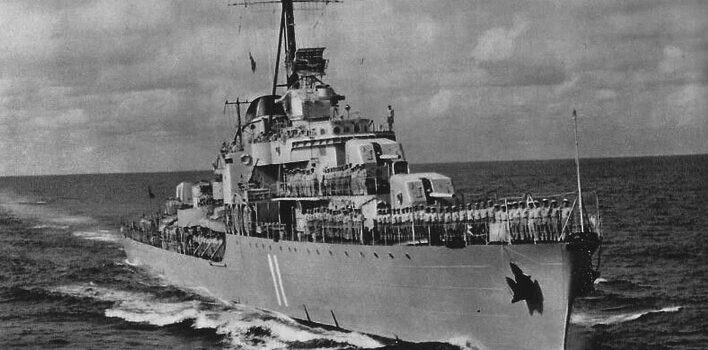
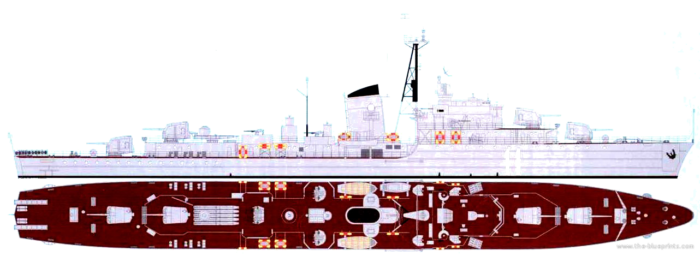
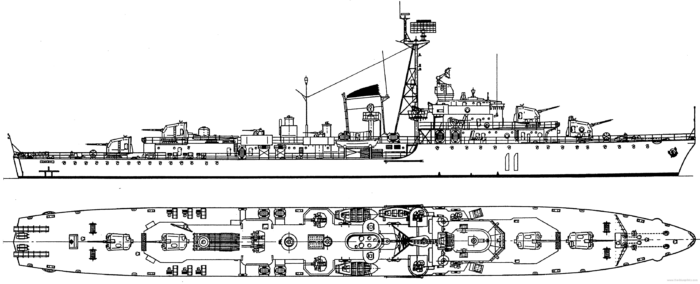
 Latest Facebook Entry -
Latest Facebook Entry -  X(Tweeter) Naval Encyclopedia's deck archive
X(Tweeter) Naval Encyclopedia's deck archive Instagram (@navalencyc)
Instagram (@navalencyc)





 French Navy
French Navy Royal Navy
Royal Navy Russian Navy
Russian Navy Armada Espanola
Armada Espanola Austrian Navy
Austrian Navy K.u.K. Kriegsmarine
K.u.K. Kriegsmarine Dansk Marine
Dansk Marine Nautiko Hellenon
Nautiko Hellenon Koninklije Marine 1870
Koninklije Marine 1870 Marinha do Brasil
Marinha do Brasil Osmanlı Donanması
Osmanlı Donanması Marina Do Peru
Marina Do Peru Marinha do Portugal
Marinha do Portugal Regia Marina 1870
Regia Marina 1870 Nihhon Kaigun 1870
Nihhon Kaigun 1870 Preußische Marine 1870
Preußische Marine 1870 Russkiy Flot 1870
Russkiy Flot 1870 Svenska marinen
Svenska marinen Søværnet
Søværnet Union Navy
Union Navy Confederate Navy
Confederate Navy Armada de Argentina
Armada de Argentina Imperial Chinese Navy
Imperial Chinese Navy Marinha do Portugal
Marinha do Portugal Mexico
Mexico Kaiserliche Marine
Kaiserliche Marine 1898 US Navy
1898 US Navy Sovietskiy Flot
Sovietskiy Flot Royal Canadian Navy
Royal Canadian Navy Royal Australian Navy
Royal Australian Navy RNZN Fleet
RNZN Fleet Chinese Navy 1937
Chinese Navy 1937 Kriegsmarine
Kriegsmarine Chilean Navy
Chilean Navy Danish Navy
Danish Navy Finnish Navy
Finnish Navy Hellenic Navy
Hellenic Navy Polish Navy
Polish Navy Romanian Navy
Romanian Navy Turkish Navy
Turkish Navy Royal Yugoslav Navy
Royal Yugoslav Navy Royal Thai Navy
Royal Thai Navy Minor Navies
Minor Navies Albania
Albania Austria
Austria Belgium
Belgium Columbia
Columbia Costa Rica
Costa Rica Cuba
Cuba Czechoslovakia
Czechoslovakia Dominican Republic
Dominican Republic Haiti
Haiti Hungary
Hungary Honduras
Honduras Estonia
Estonia Iceland
Iceland Eire
Eire Equador
Equador Iran
Iran Iraq
Iraq Latvia
Latvia Liberia
Liberia Lithuania
Lithuania Mandchukuo
Mandchukuo Morocco
Morocco Nicaragua
Nicaragua Persia
Persia San Salvador
San Salvador Sarawak
Sarawak Uruguay
Uruguay Venezuela
Venezuela Zanzibar
Zanzibar Warsaw Pact Navies
Warsaw Pact Navies Bulgaria
Bulgaria Hungary
Hungary

 Bundesmarine
Bundesmarine Dutch Navy
Dutch Navy Hellenic Navy
Hellenic Navy Marina Militare
Marina Militare Yugoslav Navy
Yugoslav Navy Chinese Navy
Chinese Navy Indian Navy
Indian Navy Indonesian Navy
Indonesian Navy JMSDF
JMSDF North Korean Navy
North Korean Navy Pakistani Navy
Pakistani Navy Philippines Navy
Philippines Navy ROKN
ROKN Rep. of Singapore Navy
Rep. of Singapore Navy Taiwanese Navy
Taiwanese Navy IDF Navy
IDF Navy Saudi Navy
Saudi Navy Royal New Zealand Navy
Royal New Zealand Navy Egyptian Navy
Egyptian Navy South African Navy
South African Navy






























 Ukrainian Navy
Ukrainian Navy dbodesign
dbodesign